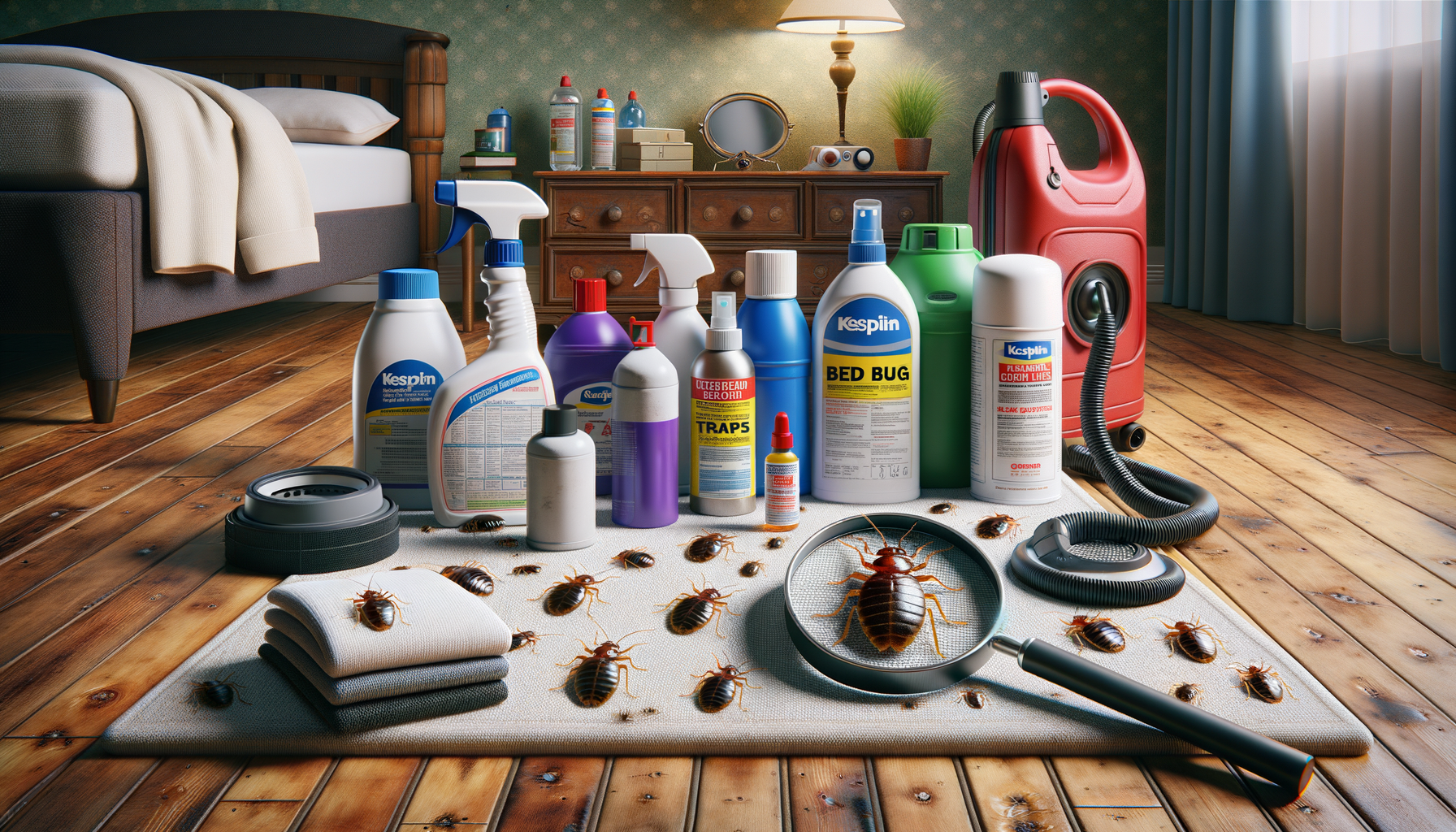
Guide to Bed Bug Treatment Products: Smart Solutions to Detect, Manage, and Prevent Infestations
Understanding the Bed Bug Menace
Bed bugs, those tiny, elusive creatures, have been a source of discomfort and distress for many. Known for their ability to hide in the smallest of crevices, these pests can quickly turn a peaceful night’s sleep into a nightmare. Understanding the life cycle and habits of bed bugs is crucial in tackling an infestation effectively. Bed bugs typically feed on human blood and are most active during the night. They are attracted to warmth and the carbon dioxide we exhale, making beds an ideal habitat. Recognizing early signs of infestation, such as small, itchy bites, blood spots on sheets, or a musty odor, can help in taking timely action.
Preventing a full-blown infestation requires vigilance. Regular cleaning and inspection of bedding, furniture, and luggage, especially after travel, can prevent bed bugs from taking hold. Additionally, encasing mattresses and pillows with protective covers can reduce hiding spots and make detection easier. By understanding these aspects, homeowners can better prepare themselves to combat bed bugs effectively.
Exploring Bed Bug Treatment Options
When it comes to treating bed bug infestations, there are several avenues one can explore. Each method has its own set of advantages and considerations. Chemical treatments are among the most common, involving the application of insecticides specifically designed to target bed bugs. While effective, it’s important to follow safety guidelines and possibly consult a professional to ensure proper application and avoid potential health risks.
For those seeking non-chemical solutions, heat treatment is a popular choice. This method involves raising the temperature of an infested area to a level that is lethal to bed bugs. It’s a proven approach that can penetrate hard-to-reach areas, ensuring a comprehensive treatment. However, it often requires professional equipment and expertise to execute safely and effectively.
Another alternative is the use of diatomaceous earth, a natural substance that can be sprinkled in areas where bed bugs are suspected. This powder dehydrates and ultimately kills bed bugs upon contact. While it is a slower method, it is non-toxic and can be a good option for those with concerns about chemical treatments.
DIY Methods for Bed Bug Control
For those who prefer a hands-on approach, there are several do-it-yourself methods that can help manage bed bug infestations. Vacuuming is an effective way to remove bed bugs and their eggs from carpets, mattresses, and furniture. It’s important to empty the vacuum immediately after use to prevent re-infestation. Additionally, washing and drying bedding and clothing at high temperatures can kill bed bugs and their eggs.
Steam cleaning is another effective DIY method. The high temperature of steam can penetrate deep into fabrics and crevices, killing bed bugs on contact. This method is particularly useful for treating mattresses, upholstered furniture, and curtains. However, it requires careful handling to avoid damage to sensitive materials.
Homeowners can also create barriers to prevent bed bugs from spreading. Placing bed bug interceptors under the legs of beds and furniture can trap bed bugs as they move, helping to monitor and reduce their numbers. These methods, when used consistently and in combination, can significantly reduce the presence of bed bugs and prevent future infestations.
The Role of Professional Exterminators
When faced with a severe bed bug infestation, seeking the expertise of professional exterminators can be a wise decision. These experts are equipped with specialized tools and knowledge to effectively eliminate bed bugs from homes. Professional exterminators often begin with a thorough inspection to assess the extent of the infestation and identify potential hiding spots.
One of the key advantages of hiring professionals is their access to advanced treatment methods, such as heat treatments and fumigation, which may not be feasible for homeowners to conduct on their own. Additionally, professional exterminators can provide guidance on preventive measures to ensure that bed bugs do not return.
It’s important to choose a reputable exterminator with experience in dealing with bed bugs. Reading reviews, checking credentials, and asking for recommendations can help in selecting a reliable service provider. While professional services can be more costly than DIY methods, they often provide a more comprehensive solution, especially in cases of severe infestations.
Preventing Future Bed Bug Infestations
Once you’ve tackled a bed bug infestation, preventing their return is crucial. Regularly inspecting your living space, especially after travel or hosting guests, can help catch any new infestations early. Keeping your home clutter-free reduces hiding spots for bed bugs and makes inspections easier.
Investing in protective encasements for mattresses and pillows can also serve as a preventive measure, making it harder for bed bugs to establish themselves. Additionally, sealing cracks and crevices in walls and furniture can limit potential entry points for these pests.
Educating yourself and others about bed bug prevention is equally important. Being aware of the risks and signs of bed bugs can help in taking prompt action, reducing the chances of a full-blown infestation. By adopting these preventive strategies, homeowners can enjoy peace of mind and a bed bug-free environment.